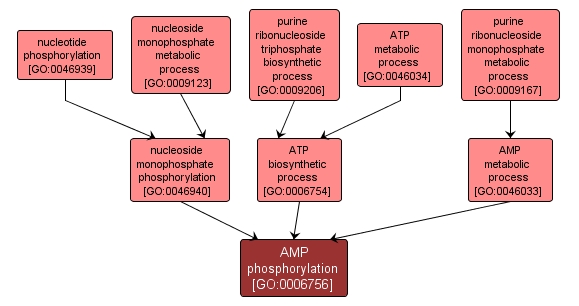GO TERM SUMMARY
|
| Name: |
AMP phosphorylation |
| Acc: |
GO:0006756 |
| Aspect: |
Biological Process |
| Desc: |
The process of introducing a phosphate group into AMP, adenosine monophosphate, to produce ADP. Addition of two phosphate groups produces ATP. |
|

|
INTERACTIVE GO GRAPH
|














